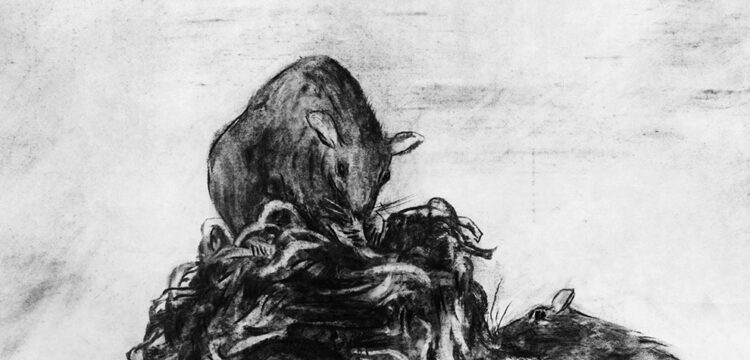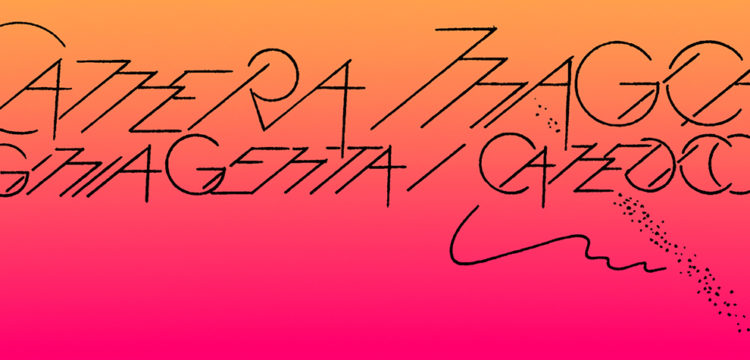La Volpe
Salta sul ghiro marrone ek gioca con lo zaino blu
This impossibly titled exhibition is not even an exhibition but a palimpsest made up of paintings, objects, moving structures, sounds, sculptures and a variety of events and activities taking place throughout the month of April. Words, letters, languages and the human body, as well as gloves and Q-tips, rhinos and silkscreen prints, are just some of the ingredients of a combinatorial and musical game.
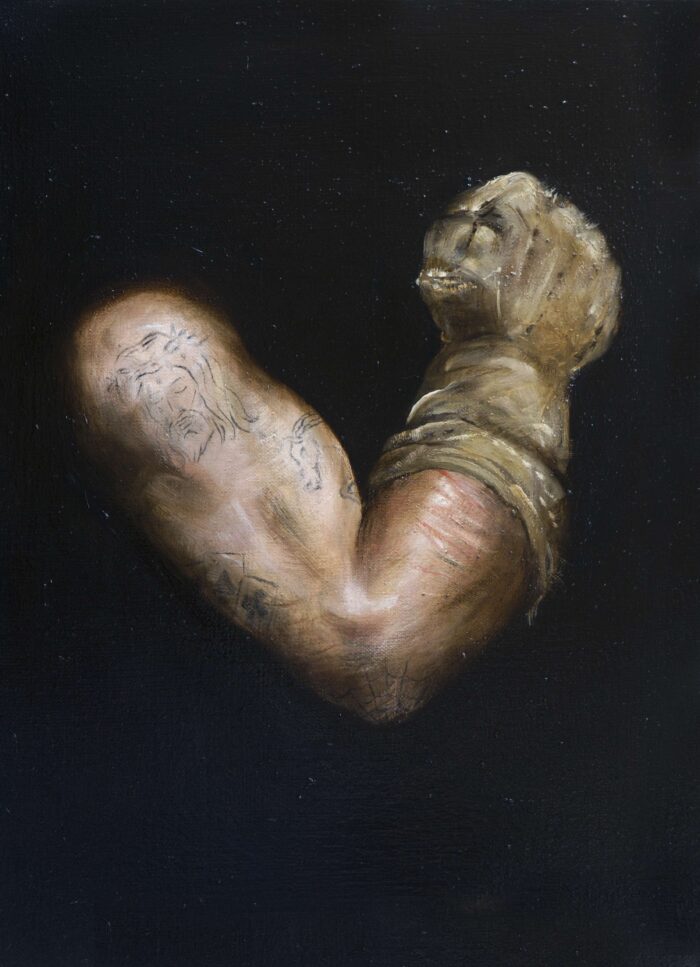
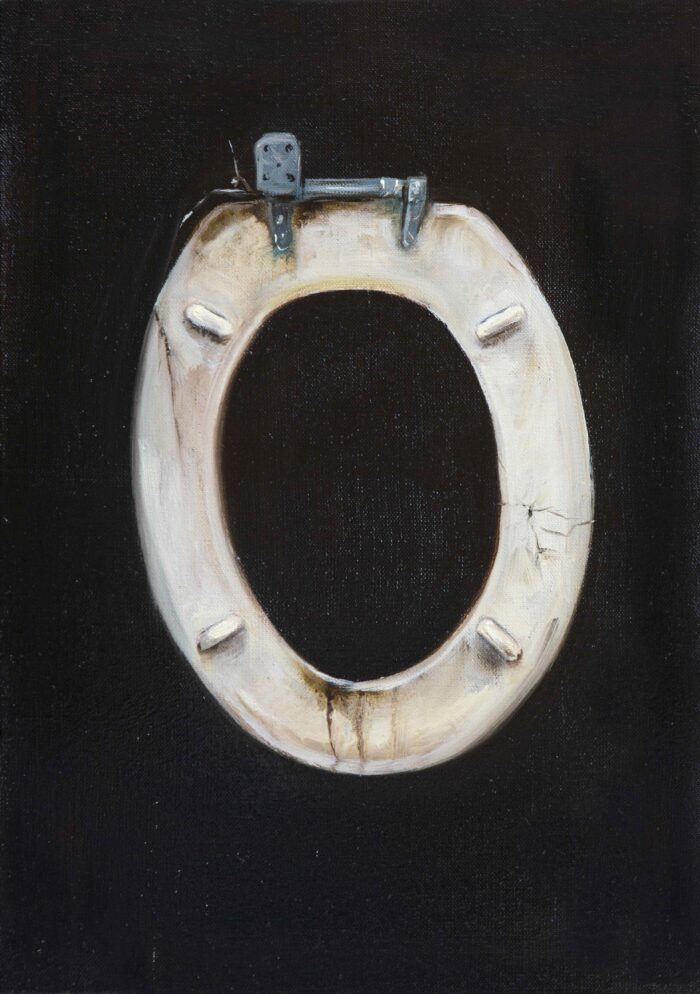
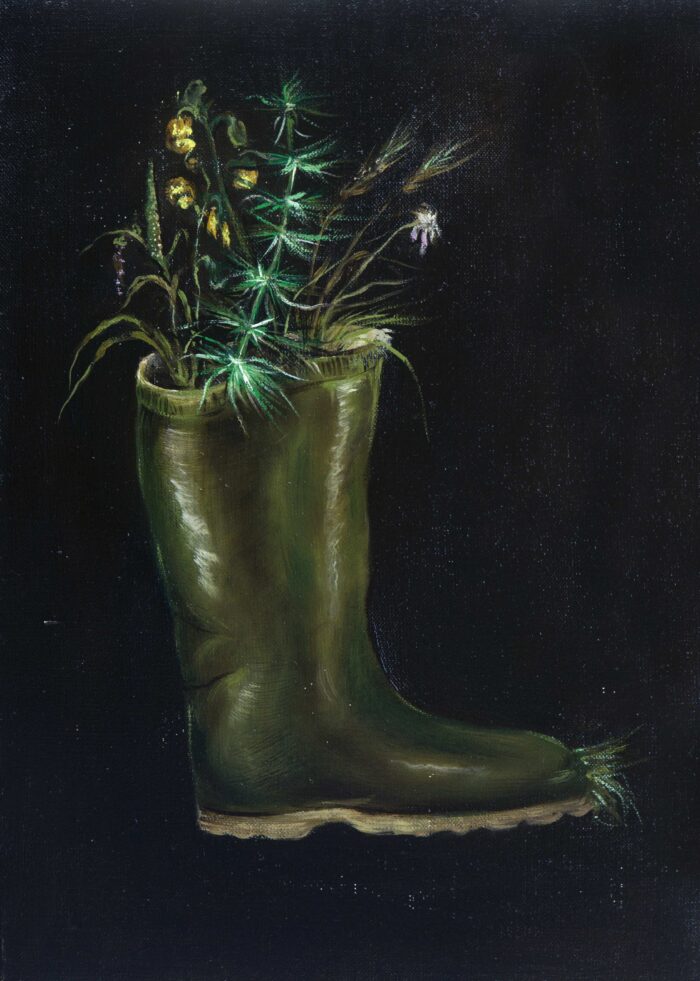
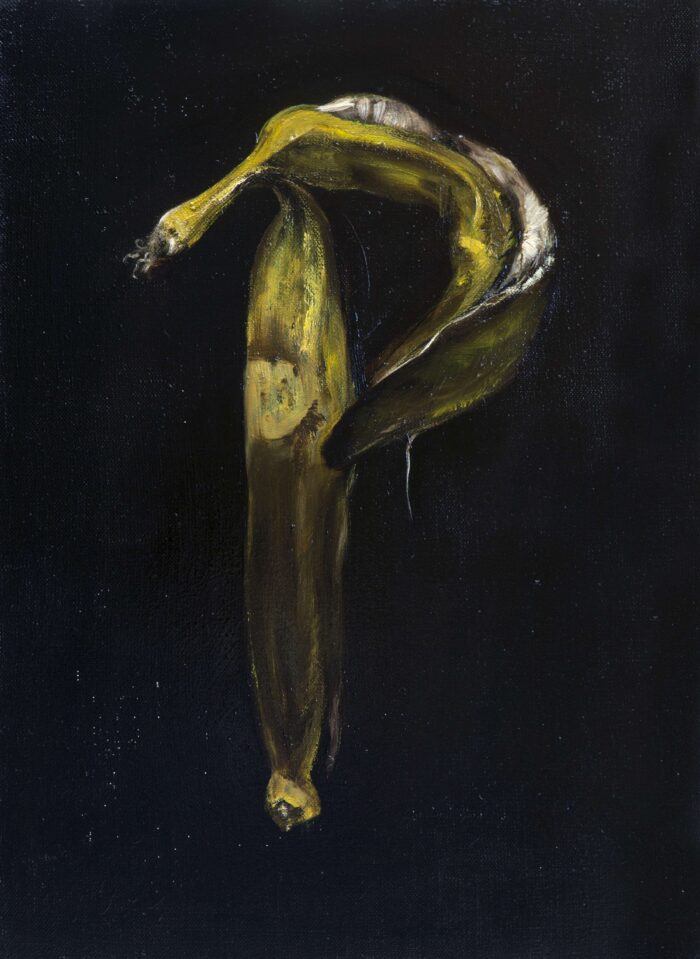
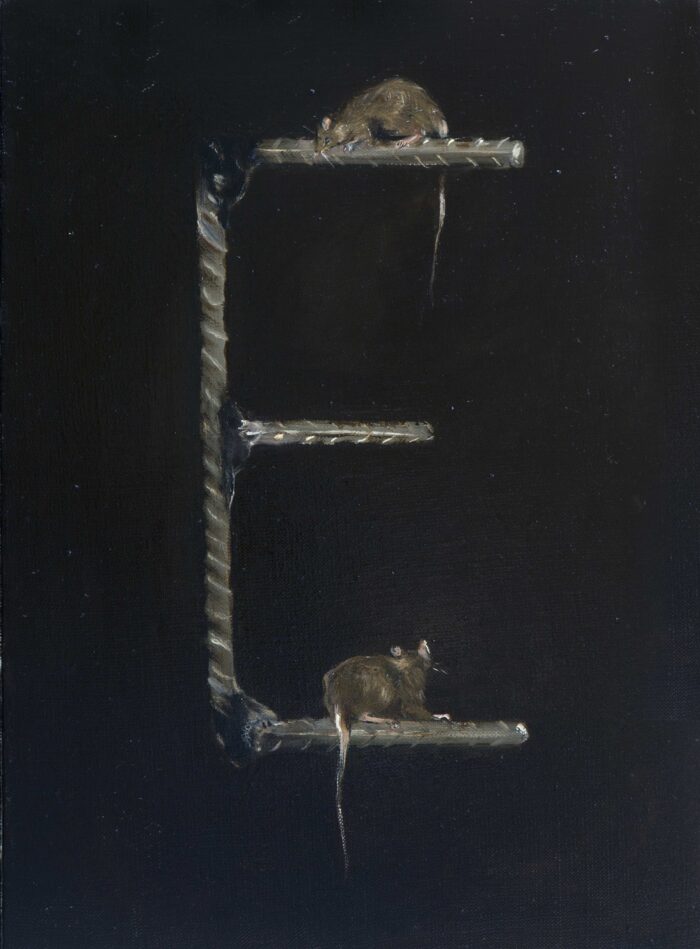
The pangram appears as a symphony of letters, a dance of consonants and vowels flowing in the harmony of that funny combinatorial system we call the alphabet. Like an enchanting magician, the writer of a heteroliteral pangram captures each letter once and only once, to compose a complete and accomplished sentence. Playing all the keys of the piano but with a single touch: here is the savory and skillful art of combination. Linguistic enigma, precision of the limit, combinatorial labyrinth, abyss of graphemes, score without repetition or duplication, gateway to the hidden dimensions of the universe of signs, symbols, drawing and writing. Because then, to tell the truth, writing is different from speaking, and drawing a letter turns it into an image or a sign or a symbol-imagine what happens when we start painting it. So what did a medieval scribe actually do when copying a holy book? Did he write, paint, draw? Good question, John Lawrence Luke and Valentina answer in their own way, with their scrabble of letters gone mad, arranging them like cheerleaders with liturgical catafalques, portraying them with Gothic splendor, belching them with the voice of the last white rhinoceros that was. Glossolalia carries us away, cutting the air with ceremonial knives. And so: Mr. Jock, TV quiz PhD, bags few lynx. Jinxed wizards pluck ivy from the big quilt. Sphinx of black quartz, judge my vow. Here, in Milan, @brigantinos.
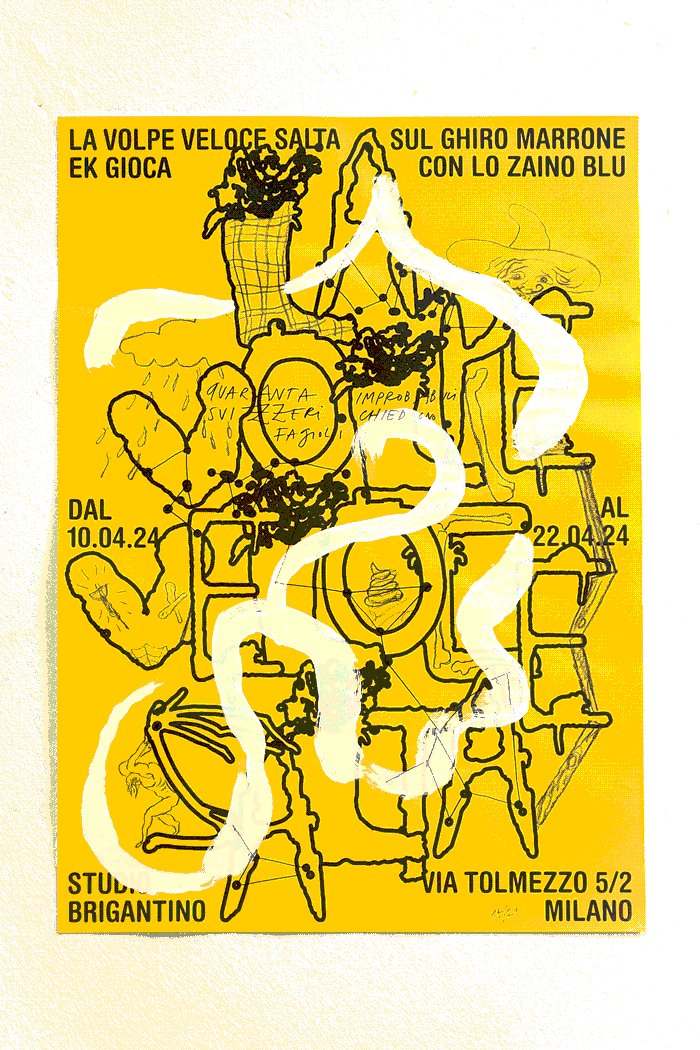
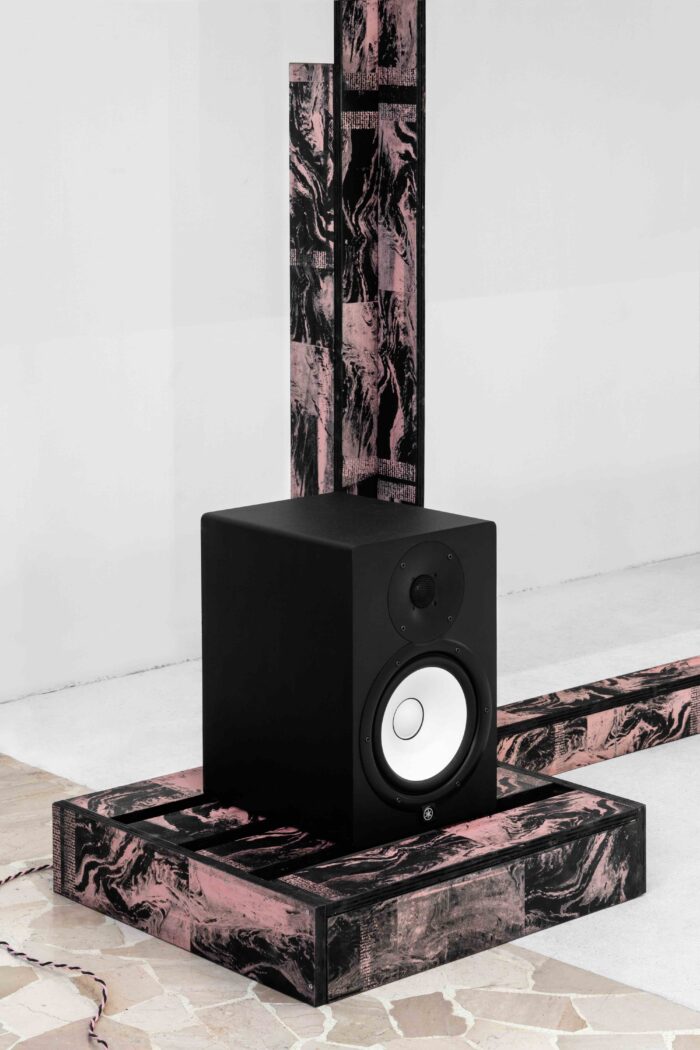
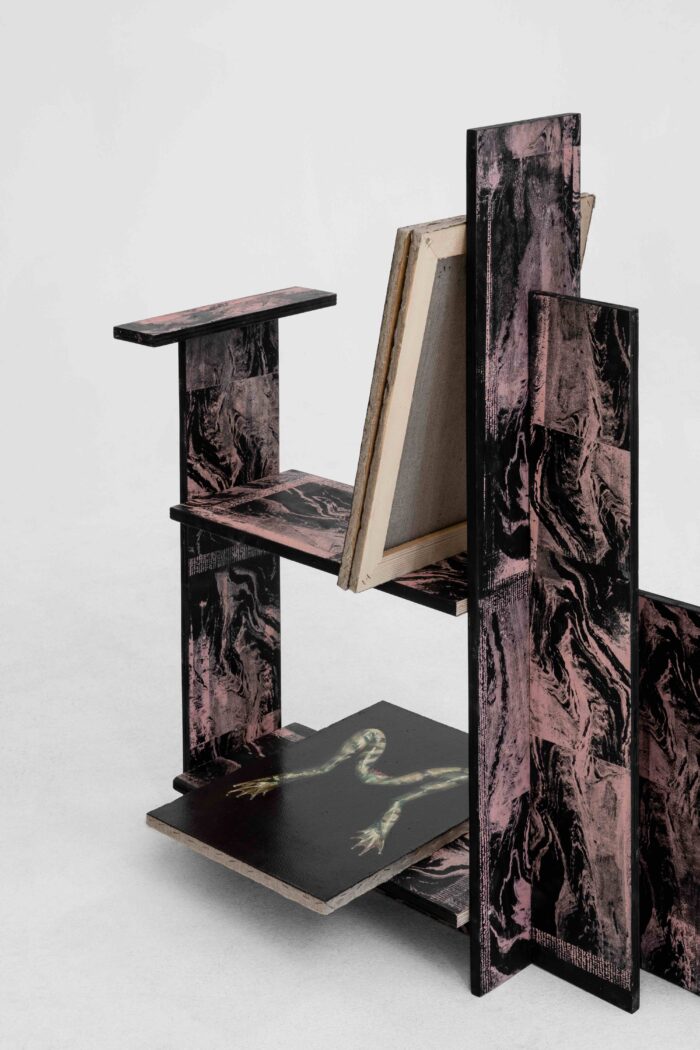
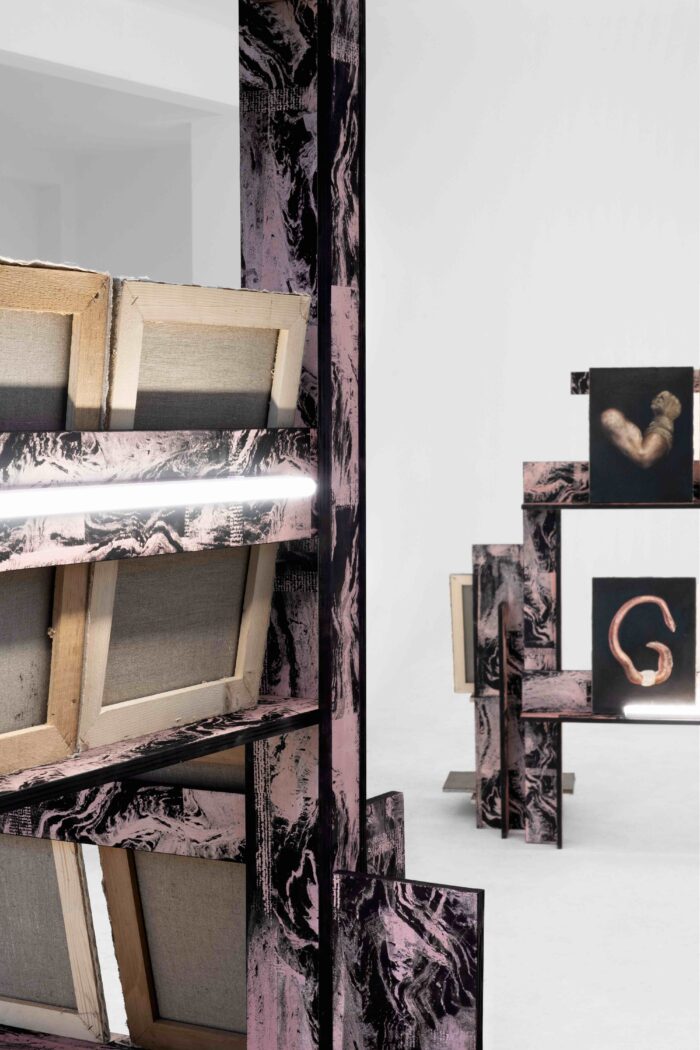
This is an exhibition by Luca Trevisani, Lorenzo D’Anteo, and Edizioni Brigantino, crossed by Michele Galluzzo, Michela De Mattei, Francesca Flora, Alessandro Bosetti, and Renato Grieco.
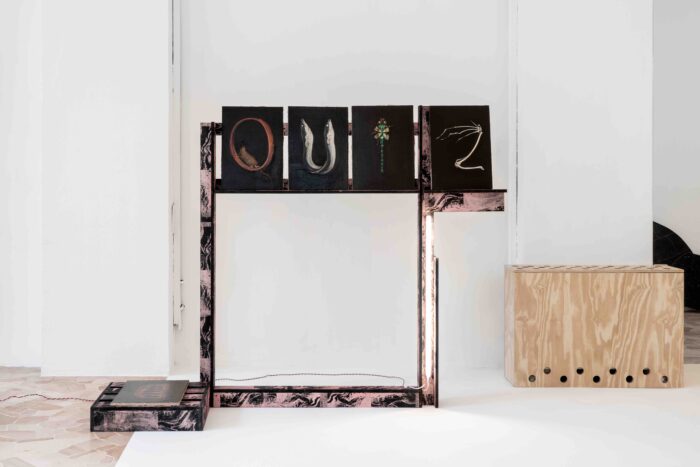
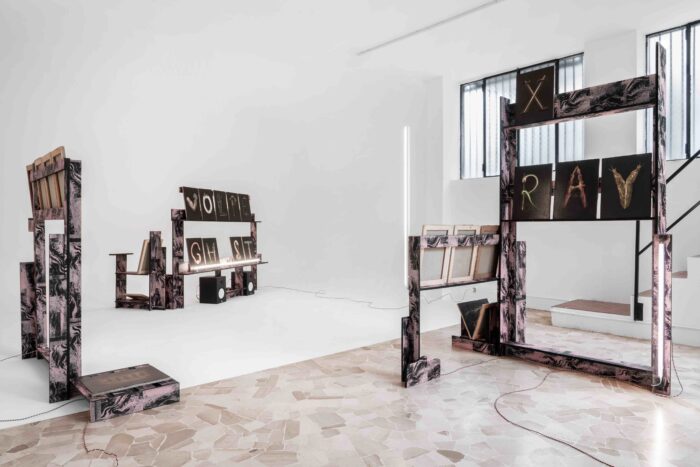
Michele Galluzzo is a graphic designer and researcher. After a bachelor’s degree in Communication Sciences from the University of Salento and a master’s degree from ISIA Urbino, in 2018 he completed a doctorate in Design Sciences at the Iuav University of Venice. From 2014 to 2017 he was a research assistant and graphic designer at the AIAP Graphic Design Historical Archive in Milan. Since 2018 he has been part of the editorial staff of the international graphic design magazine Progetto Grafico. Since fall 2019 he has been curating the Instagram page @logo_irl and in 2020 founded—together with Franziska Weitgruber—the design/research duo Fantasia Type. Since October 2020 he is RTD at UniBZ in Bolzano/Bozen.
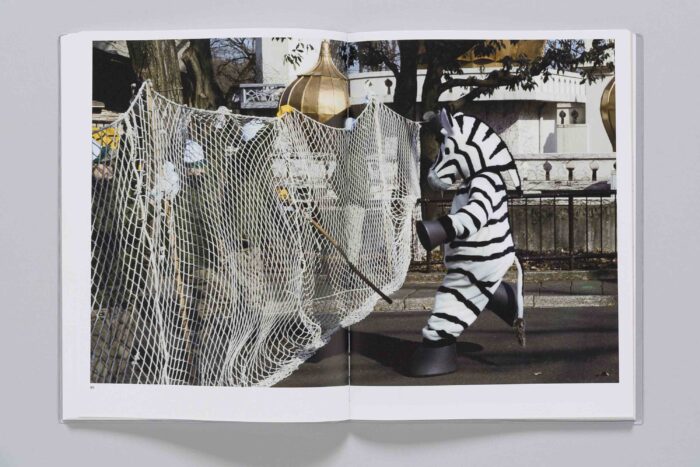
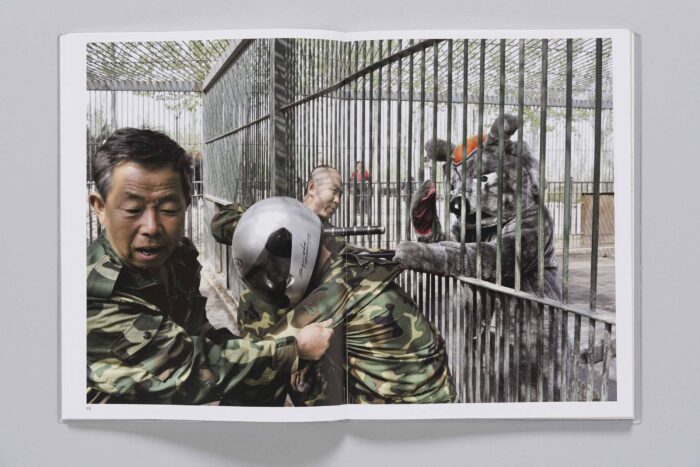
Michela De Mattei is currently based in Milan. She works across different formats and media, developing fictional scenarios and unusual ecosystems in which animal-human affairs are often hijacked by technologies to question stan dards of authority and control, while addressing issues of animal agency and the changing dynamics of communication systems. Recent exhibitions include: Retrofuturo, MACRO Rome (2024); Dive-In, Porto Design Biennale, Porto (2023); Performative 02, MAXXI L’Aquila (2022); Aquaria – The illusion of a boxed sea, curated by Angela Rui, MAAT museum, Lisbon (2021); Hypermaremma, Terme di Vulci (2021); The Dreamfish, Alserkal Avenue, Dubai (2019); Blushing, solo show at Belmacz, London (2019); The Shape of a Circle in the Mind of a Fish, Part 1: Language, curated by Filipa Ra mos and Lucia Pietroiusti, Serpentines Galleries/ZSL London Zoo (2018); Estée Lauder series, Italian Cultural Institute, London (2018); Inscape Rooms, Istituto Svizzero, Roma (2017).
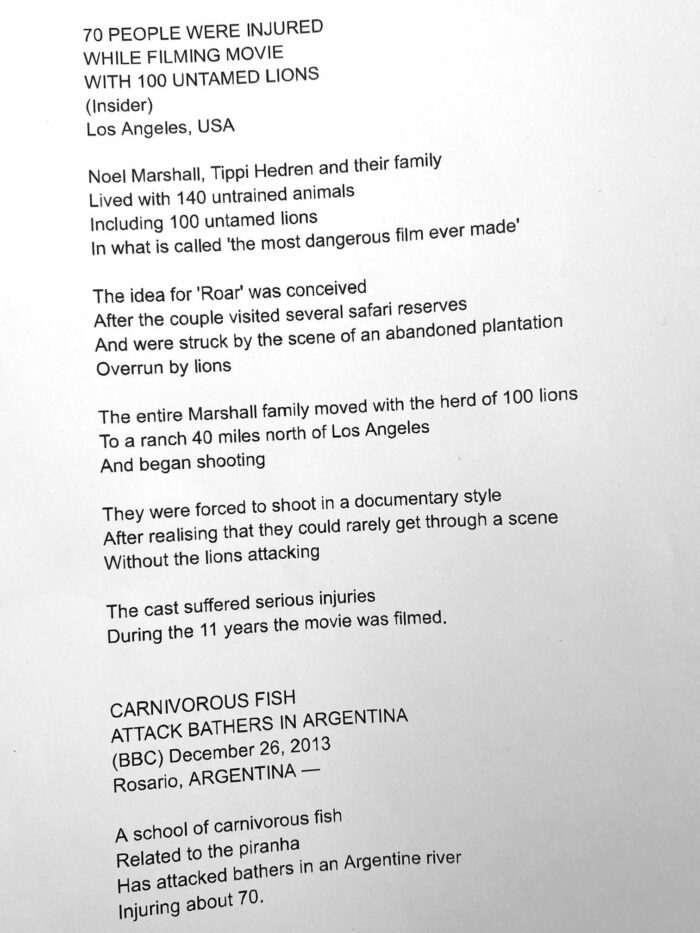
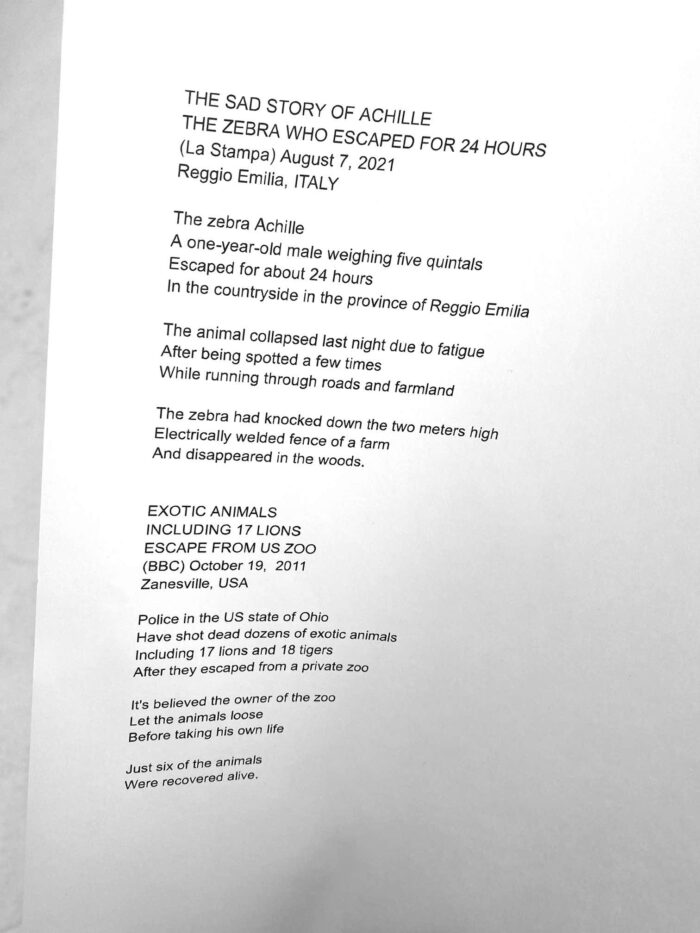
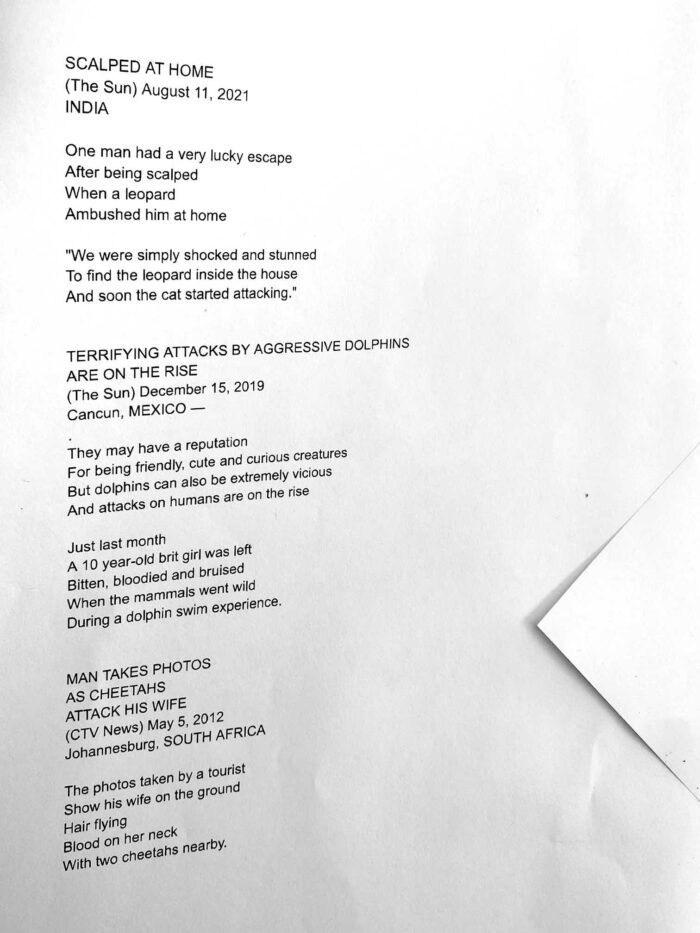
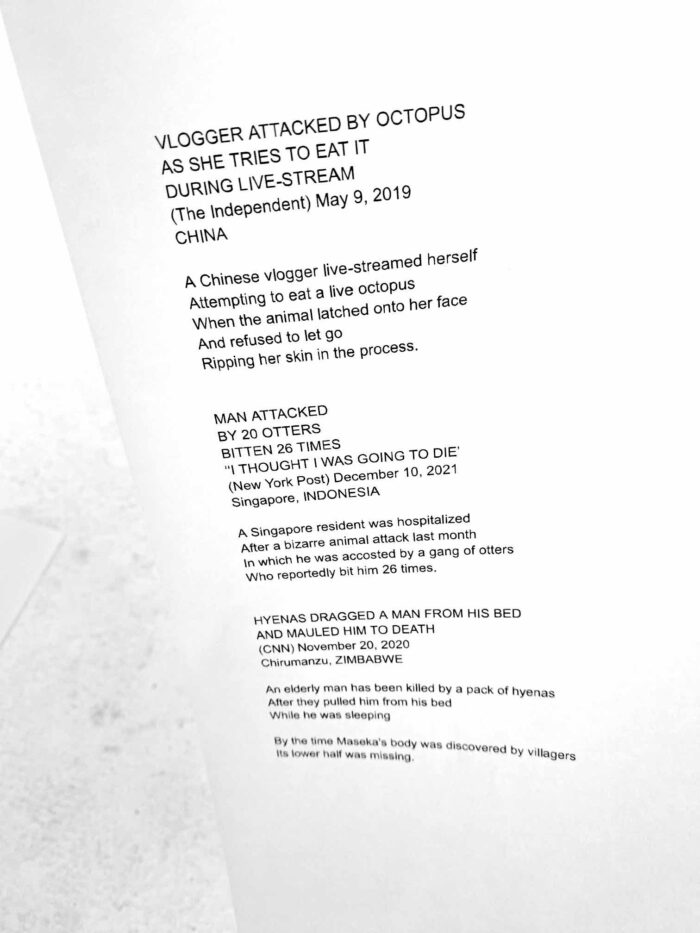
Francesca Flora is a writer and performer deploying poetic language through her voice—and its machinic alterations—to explore the affective and semiotic potentialities of poetic language, in relation to political dynamics embedded in the everyday.
Part 1-3: Music from Portraits de voix by Alessandro Bosetti with Neuevocalsolisten Stuttgart (Johanna Vargas, Truike van der Poel, Martin Nagy, Guillermo Anzorena, Andreas Fischer). Released by Kohlhaas records.
Part 2: Plane/Talea with audience participation.
Alessandro Bosetti, born in Milan and living in Marseille, is a composer and sound artist with a particular interest in the musicality of language and in the voice, conceived as an autonomous object and an instrument of expression. His works enacts a dialogue among language, voice, and sound within complex tonal and formal constructions, often crossed by oblique irony. Bosetti creates surprising pieces and devices questioning aesthetic categories and listening postures.
Xong is the name of the collection produced by Xing, a vinyl-only record label of works by both Italian and international personalities linked to the variegated worlds of live performativity. The collection explores a geography of artists who present this sonic field as a platform to expand their staged worlds. “The space of the record” is given focus and ampli fies their poetics as both a sonic and physical phenomenon. Xong is a unique project that draws out divergent under standings of the performative and live arts, beyond genre and intersecting between different practices. Xong collects a series of original creations that constitute an expanded program. Each physical record is a numbered edition on white vinyl hosting the solidification of the gesture. A wave upon wave, a series of “Music-Non-Music” to actualize both the artists and listeners imagination.
Kohlhaas is a label active since late 2013 that has developed an interest in sound research declined through a multitude of styles, forms and languages. The catalog ranges from radical improvisation to electroacoustics, from sound poetry to contemporary composition.
While in a hotel room in Zurich, with a fresh broken foot and a pout on my face, those scoundrels who are nobody other than Brigantino, called me all excited about having me doing a little something something. Being the good friends that they are, they know that we often read aloud in the house where I live down south. Without pretentiousness, ownership or talent. And in spite of themselves, they may have been caught up in this practice a few times.
One reads aloud for the listener to take their eyes elsewhere. To let the reader’s voice move us away from the idea we had of the characters’ morphology; or perhaps for the opposite reason: for the words to insinuate their timbre into a friendly voice. A reading aloud to inhabit the space of the setting. Public this time.
We immediately knew that the text or texts to be selected would have to have something to do with the idea of disassembling.
I immediately knew it was time to share this text that has been with me for many years, which has been photocopied and distributed among friends all over the country because it became too rare long ago. A book as hard to find as it is to read out loud, in fact. It takes a lot of trick words and labyrinth phrases to throw the language off track and regain the real, you know?
“The Order of Things” is a compendium, or a palimpsest if you will, of the most varied objects observed in a world turned upside down, walked backwards, where science and truth are merged in the imagination and naiveté of a gaze, albeit one attentive to microscopic details.
Jacque Brosse was a psychoanalyst, expert in botany and religions. “The Order of Things” is a mysterious atlas of irresistible charm, first published in 1958 with an introduction by Gaston Bachelard.
This music was composed by me in the last weeks, while reading and re-reading again this gem.
Renato Grieco – kNN is a composer, musician from Naples, active in the field of musique concrète, acousmatic, sound art and radio-art. He is engaged on the themes of listening, recording, archiving, storytelling, voice and speech. He questions space through production, recording, organization and dissemination of sounds. After starting out as a double bass player, he ventured into composing music for fixed media, under the moniker kNN. Immersing himself in active research, he experimented with the arrangement of one or more sound sources in a habitable context; he imagined and designed objects or spaces for listening, both physical and virtual; he has spoken inside some objects; he listened through other objects. His work has very little to do with the so-called ‘acoustic ecology’. He believes in absolute waste and carnival. He tries not to align with the hordes that place sound practices among scientific or purely theoretical disciplines. He considers listening as a cognitive activity per se, affecting the intellect and the body with its semantics, humor and tragic nature.
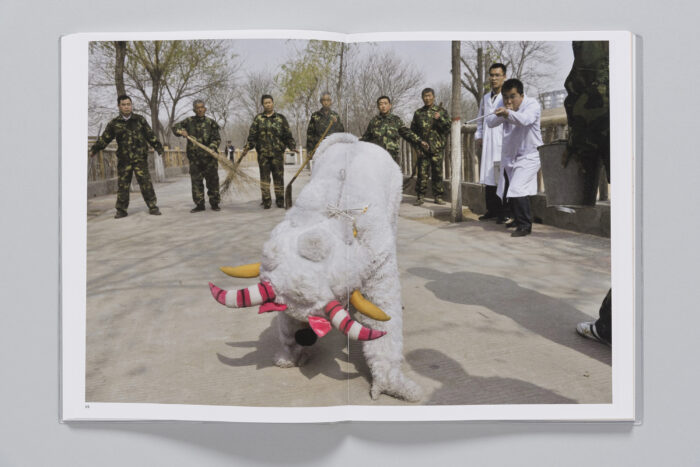
10/4/24, 6–9pm
Opening
12/4/24, 7:30–9pm
Talk by Michele Galluzzo w/ Rinoceronte Bianco
14/4/24, 11:30am–3pm
Book launch Brief Inventory of Animal Resistance, VOL.1
by Michela De Mattei with a performance by Francesca Flora at 12:30am
22/4/24, 7–9pm
FasFari (LP) on Xong & Portraits de Voix (CD) on Kohlhaas records launch and live by Alessandro Bosetti
Sound reading of Renato Grieco




